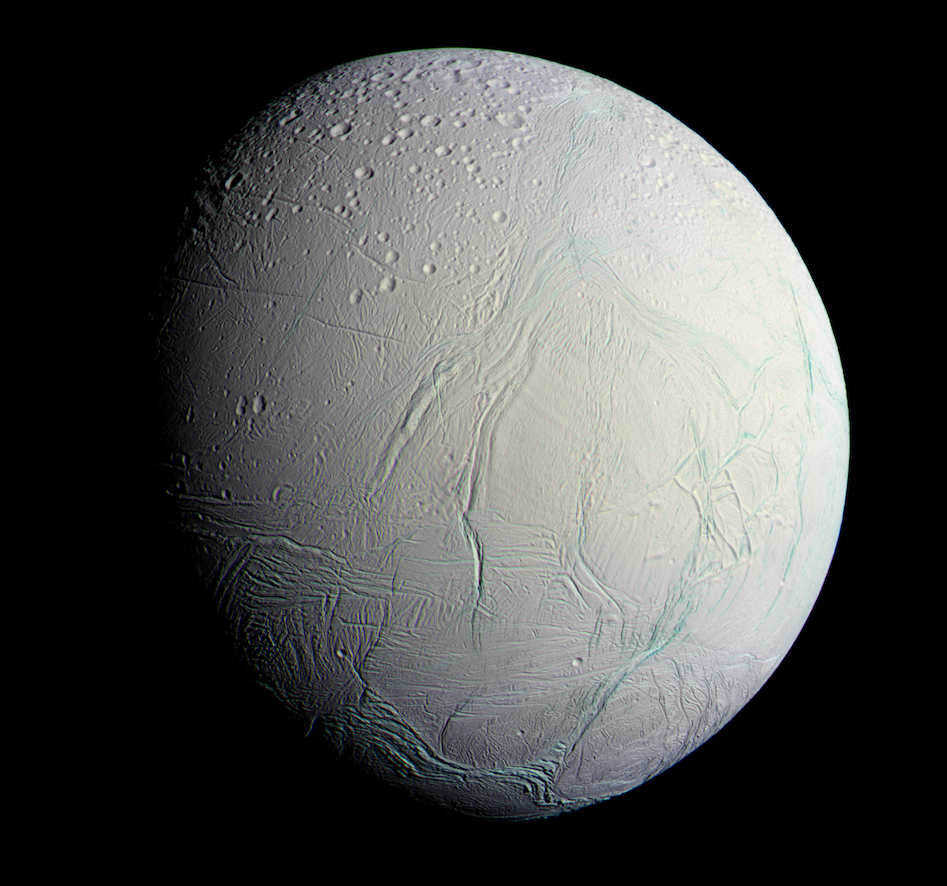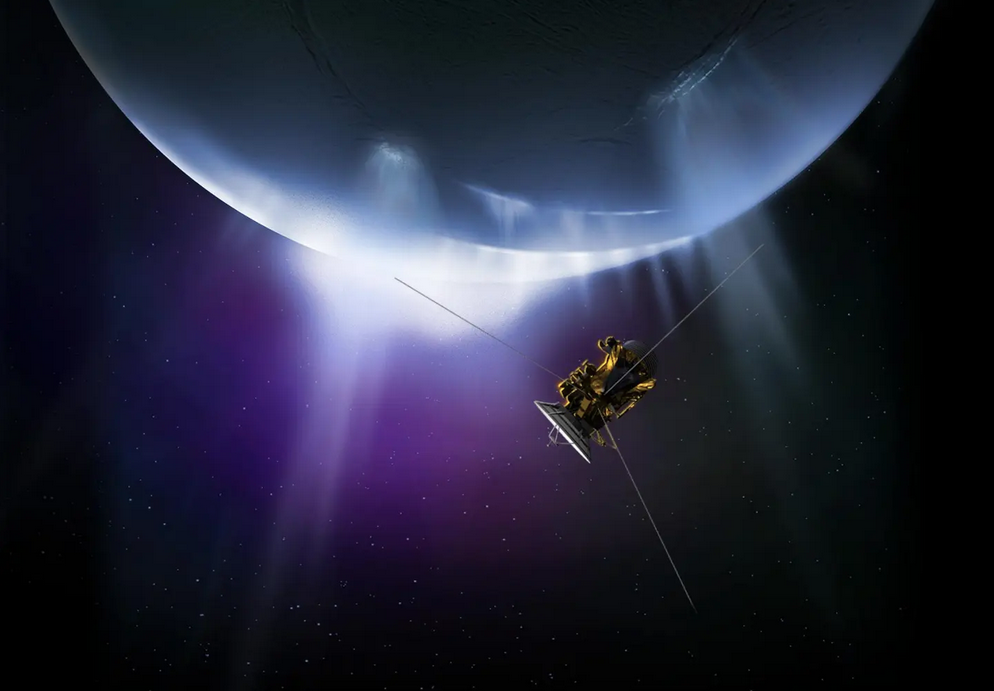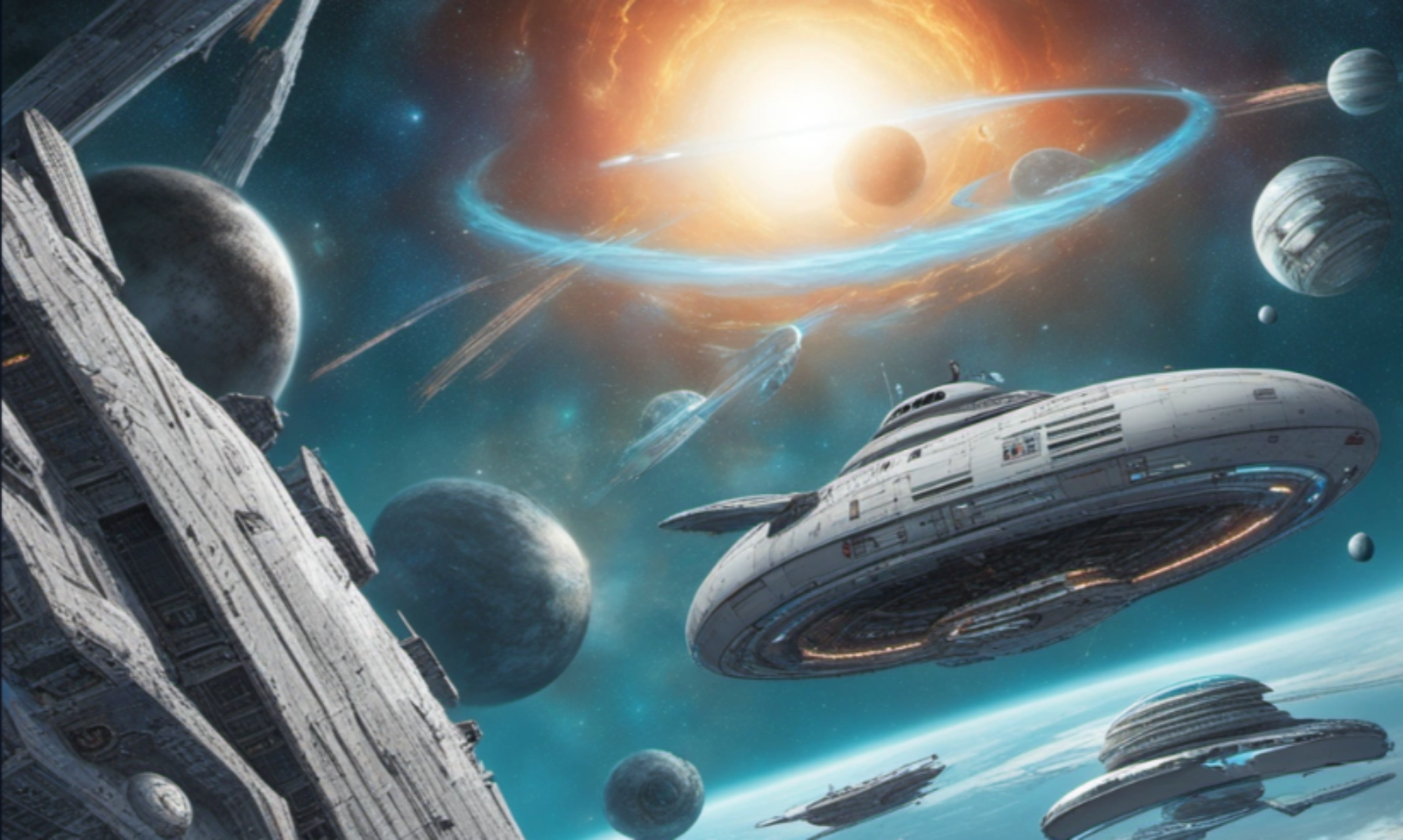Watching a cryovolcano erupt on Enceladus would be one of the sights of the solar system. These geysers shoot water vapour more than 4km into the air. Well, it’s not really ‘air’, as Enceladus doesn’t have much of an atmosphere. But so much water is ejected in these plumes that they have contributed to one of Saturn’s resplendent rings. The E-ring.
Like our moon, Enceladus is tidally locked in its orbit around Saturn, always presenting the same face to the ringed planet. Interestingly, Enceladus orbits in between moons Mimas and Tethys. Yet it is with the moon Dione that Enceladus maintains a stable relationship, locked in an orbital resonance. For every orbit of Dione around Saturn, Enceladus completes two orbits. How they fell into this pattern is beyond my understanding of orbital physics, but perhaps Mimas and Tethys aren’t large/dense enough to gravitationally disturb the relationship.
For comparison:
Dione is Saturn’s fourth largest moon at 1,123km diameter and 1.48g/cm^3 density
Mimas: 396km, 1.15g/cm^3
Tethys: 1060km, 0.98g/cm^
Enceladus: 500km, 1.61g/cm^3.
Another interesting fact: Saturn has 146 moons, but I wouldn’t cite this as gospel. The number of Saturn’s moons gets updated as often as my phone should. And why are rocks that are only the size of a football field considered a moon? Surely they’re dwarf moons, or moonlets?

But back to our genuine moon that is Enceladus. Scientists believe Enceladus’s orbital resonance with Dione produces tidal forces that heat its interior, ultimately leading to the great plumes that future space tourists will marvel at. Future drink companies are already racing to bottle some of that Enceladan mineral water, no doubt by sending satellites directly through the plumes so it’s ‘bottled at source’.
Discovery
William Herschel (1738-1822) found Uranus with a self-constructed telescope in 1781, and discovered Enceladus seven years later. Finding Uranus made him the first astronomer to ‘discover’ another planet. We can see the planets Mercury, Venus, Mars, Jupiter and Saturn without a telescope, so they have been known and observed since ancient times.
Hershel’s telescope in Slough was the world’s largest, at 1.2 x 12.2m. His discovery of Uranus made him a celebrity, and he backed this up by finding Enceladus and Mimas in August and September, 1789.
Enceladus is named after one of the titans. These giants are the descendants of Cronus (Greek Uranus), although it’s something of misnomer because Enceladus isn’t actually that big moonwise, unlike Saturn’s largest moon, Titan itself.
According to Greek myth, Enceladus was the offspring of Gaia, the Earth mother, and Uranus, the “starry heaven” (Hesiod). A giant who fought Athena, Enceladus is associated with volcanic eruptions, with legend having him buried beneath Mount Etna. William would not have been able to spot the cryo-eruptions through the Herschel family telescope. In fact it was William’s son John, who came up with the name:
“How was work today dad?”
“Good thanks Johnny-boy, I discovered a moon.”
“Wow dad! Can I name it?”
“What do you have in mind?”
“I was thinking of ‘Bill’, after you dad.”
Recent and future missions
Excitement around ‘Bill’ intensified during the recently concluded Cassini mission, a joint project of the European Space Agency (ESA), Agenzia Spaziale Italia (ASI) and NASA. The Cassini spacecraft and accompanying Huygens probe launched in 1997 and reached Saturn and its moons in 2004. While, Cassini didn’t bottle any water, a flyby through a plume in 2008 enabled its Ion and Neutral Mass Spectrometer to analyse the chemical composition of the vapour spouting into space. These volcano-like eruptions spew forth plumes rich in the organic compounds vital to the formation of carbon-based life.

What makes Enceladus such a fascinating object to study is not just the plumes, but the possibility of them originating from a subsurface ocean harbouring microscopic life. Like Jupiter’s moon Europa, deep hydrothermal vents may be warming Enceladus’s watery depths. A 2017 study found carbon dioxide, hydrogen and methane in the plumes, indicating possible metabolic processes.
Our machines have visited Saturn’s icy moon three times. Voyager 1 in 1980, Voyager 2 in 1981, and in Cassini’s extended mission from 2004 to 2017. At the conclusion of the Cassini mission, scientists steered the probe into the heart of Saturn, intentionally destroying it to avoid contaminating the Saturn lunar-system.
Good news for Enceladan groupies: the ESA has Enceladus in its sights once again, and is conducting feasibility studies that include the use of a lander. Craft beer makers looking for some Enceladan water may have to wait a little longer.
